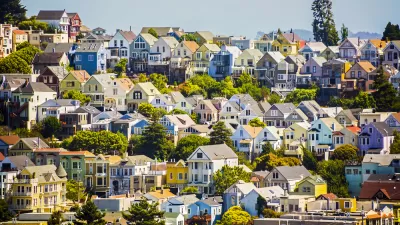Through the lens of the Los Angeles region, Becky M. Nicolaides and Andrew Wiese examine how America's suburbs sustain and reinforce inequality.
Nicolaides, a research scholar at the U.C.L.A. Center for the Study of Women, and Wiese, a professor of history at San Diego State University, use wealthy Bradbury and working class Azusa, and other communities, to explain the "power of places to fix inequity over time," which they call "a defining pattern of contemporary suburban life."
"Nationwide, rich and poor neighborhoods like these house a growing proportion of Americans, up to 31 percent compared with 15 percent in 1970, according to a recent study by Sean F. Reardon and Kendra Bischoff. Meanwhile, iconic middle-income suburbs are shrinking in numbers and prospects. Today’s suburbs provide a map not just to the different worlds of the rich and the poor, which have always been with us, but to the increase in inequality between economic and social classes."
"From the historian’s perspective, these patterns also reveal another truth about suburban places: their tendency to sustain and reinforce inequality. Bradbury and Azusa have maintained their spots in the top and bottom tiers of the Los Angeles suburbs for decades."
As the authors note, the "suburbs aren’t going anywhere." So what can be done to reverse this dynamic?
"Policies to redress suburban inequality must focus not only on factors like income but also on tax equity across metro areas and regional planning that fairly distributes resources and responsibilities (like affordable housing)," they suggest.
FULL STORY: Suburban Disequilibrium

Alabama: Trump Terminates Settlements for Black Communities Harmed By Raw Sewage
Trump deemed the landmark civil rights agreement “illegal DEI and environmental justice policy.”

Planetizen Federal Action Tracker
A weekly monitor of how Trump’s orders and actions are impacting planners and planning in America.

The 120 Year Old Tiny Home Villages That Sheltered San Francisco’s Earthquake Refugees
More than a century ago, San Francisco mobilized to house thousands of residents displaced by the 1906 earthquake. Could their strategy offer a model for the present?

In Both Crashes and Crime, Public Transportation is Far Safer than Driving
Contrary to popular assumptions, public transportation has far lower crash and crime rates than automobile travel. For safer communities, improve and encourage transit travel.

Report: Zoning Reforms Should Complement Nashville’s Ambitious Transit Plan
Without reform, restrictive zoning codes will limit the impact of the city’s planned transit expansion and could exclude some of the residents who depend on transit the most.

Judge Orders Release of Frozen IRA, IIJA Funding
The decision is a victory for environmental groups who charged that freezing funds for critical infrastructure and disaster response programs caused “real and irreparable harm” to communities.
Urban Design for Planners 1: Software Tools
This six-course series explores essential urban design concepts using open source software and equips planners with the tools they need to participate fully in the urban design process.
Planning for Universal Design
Learn the tools for implementing Universal Design in planning regulations.
Clanton & Associates, Inc.
Jessamine County Fiscal Court
Institute for Housing and Urban Development Studies (IHS)
City of Grandview
Harvard GSD Executive Education
Toledo-Lucas County Plan Commissions
Salt Lake City
NYU Wagner Graduate School of Public Service





























